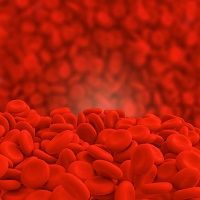Article
Predicting Bleeding Risk in Atrial Fibrillation Patients Treated with Anticoagulants
Author(s):
A new analysis of serious bleeds among patients who use the blood thinner warfarin to treat atrial fibrillation found that consideration of anticoagulation quality would improve the accuracy of 3 bleeding risk scores.

A new analysis of serious bleeds among patients who use the blood thinner warfarin to treat atrial fibrillation (AFib) found that consideration of anticoagulation quality would improve the accuracy of 3 bleeding risk scores.
Investigators used pooled population information about warfarin users from the Stroke Prevention using an Oral Thrombin Inhibitor in patients with atrial Fibrillation (SPORTIF) III and V studies to measure the performance of 4 bleeding risk scores — HAS-BLED, ORBIT, ATRIA and HEMORR2HAGES — and see whether the latter 3 would work better if they considered patient time in therapeutic range (as HAS-BLED already does).
When the investigators tested the efficacy of existing risk scores, HAS-BLED fared the best by 1 important measure. Just 21.3% of the 127 adjudicated major bleeds among warfarin users in the 2 trials occurred among patients categorized as “low risk” by that scale. More than half of those bleeds occurred in patients that the other scales categorized as low risk. HAS-BLED and ORBIT, moreover, were the only 2 risk scores found by Cox regression analysis to have “high risk” scores significantly associated with an elevated risk of actual bleeds (HAS-BLED hazard ratio [HR] 1.62; 95% confidence interval [CI], 1.06 to 2.48. ORBIT HR, 1.83; 95% CI, 1.08 to 3.09).
When investigators amended ORBIT, ATRIA and HEMORR2HAGES to consider which patients spent less than 65% of the time within a therapeutic anticoagulation range, however, all 3 produced significantly improved performance. Consideration of time in the therapeutic range (TTR) moved many of the patients who actually experienced bleeds out of the “low risk” zone The modified scores for all 3 risk measurements were significantly associated (p < 0.001) with adjudicated major bleeding events.
“Our principal finding was that the different bleeding scores provided different discriminatory capacities for major bleeding in anticoagulated AFib patients; specifically, both HAS-BLED and ORBIT categorized adjudicated major bleeding events in low risk and high or medium/high risk patients appropriately, but the majority of adjudicated major bleeding events occurred in the ‘low risk’ ORBIT category,” the study authors wrote in Nature: Scientific Reports.
“Second, adding a labile INR criterion (TTR < 65%) to ORBIT, ATRIA and HEMORR2HAGES led to improved predictive performance for major bleeding compared to the original scores. Thus, both the ATRIA and ORBIT scores may perform suboptimally in identifying serious bleeding risk in a patient on warfarin, unless they are re-calibrated taking labile INRs (or TTRs) into consideration.”
The investigators who conducted the study had hypothesized that the failure of risk scores other than HAS-BLED to consider time in therapeutic range would limit their predictive power for warfarin users because several previous studies have found a strong correlation between failure to maintain therapeutic anticoagulation and major bleeds.
Time in therapeutic range is a far smaller concern for AFib patients who take novel oral anticoagulants, but investigators still hope to find more accurate predictors of bleeding risk for that population as well. A large group of investigators made news earlier this month by using records from 14,537 patients in the phase 3 ARISTOTLE trial — which compared apixaban to warfarin — to devise and begin testing the ABC-bleeding score (Age, Biomarkers [growth differentiation factor-15, high-sensitivity cardiac troponin T, and hemoglobin], and Clinical history [previous bleeding]). They then used data from 8,468 patients in the phase 3 RE-LY trial — which compared dabigatran to warfarin — to perform external validation.
“The ABC-bleeding score performed better than HAS-BLED and ORBIT scores and should be useful as decision support on anticoagulation treatment in patients with atrial fibrillation,” the study authors wrote in The Lancet, which published the findings just as they were being presented in Chicago at the scientific sessions of the American College of Cardiology meeting.





